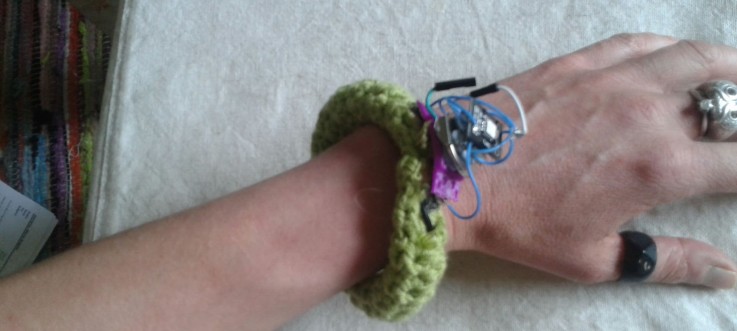August 1, 2015 by Maria Angela Ferrario

At the start of July, team Clasp took a slight detour from science festivals, worshops, and technology kitchens to present their work at the 11th European Society of Ecological Economics 2015 (ESEE2015) in Leeds. The theme of the conference was ‘Transformations’ and attracted economists, geographers, natural and social scientists whose research focus is the sustainable management of life & resources on this planet. Keynote speakers included Inge Røpke, Professor of Ecological Economics at Aalborg University; Kate Raworth, creator of the ‘Doughnut Economics’, and Andy Mace, Arup’s associate director. Andy spear-headed the award-winning Beddington Zero Energy Urban development (BeZed) in 2002.
CLASP SUSTAINABILITY: THEORY & PRACTICE
At ESEE2015, team Clasp presented the theory & practice of Clasp sustainability framework which we summarise in three aspects:
(1) material sustainability – the materials and energy resources used to make a device;
(2) technology longevity – the skills, knowledge and infrastructure required to access and maintain a technology;
(3) human capabilities – the individual and societal ‘freedoms’ afforded or hindered by the technology.
This framework was outlined in our ten-min presentation slot which also included an interactive session with the audience, and Snap show & tell; Snap is our flagship prototype which is currently under development. During the interactive session the audience was invited to pick one of our ‘design artefacts’ from the mysterious Clasp box. From moodcons to snap tiles, each artefact marked one of Clasp first 5-month development milestones. Participants took guesses of what such artefacts could be (e.g. the Rastafarian ‘bubble-wrap’ in the photo below) and engaged in conversation about the challenges and opportunities of Health IOT, focusing in particular on the ‘opacity’ of personal data life-cycle especially in relation to third-party use and ownership.
Snap was then taken out the box for a brief show & tell. Snap is a wearable personal sensing device that is modular, reflective, and it has been designed for both passive (e.g. automated capture of physiological data) and intentive use (e.g. actuated interactions with the device such as pulling and stretching).
In essence, Snap consists of a handmade crochet wristlet and a ‘computing pod’ (see photo below). Snap is currently undergoing an agile co-development process with a Core User Group (CUG) of five ASD adults and support. Updates on the latest Snap version will be soon available.
SNAP SUSTAINABILITY IN PRACTICE
(1) Material Sustainability. For the wristlets we asked crochet guru and fashion & design expert Marcia to join the team. We used naturally sourced material where possible (e.g. bamboo). Crochet techniques are used for rapid prototyping of wearable for ease of adapting design to different needs in a make, un-make, re-make fashion. For the computing pod, Steve developed early designs into 3D printed components using bio-degradable material (e.g. medical quality PLA ).
(2) Technology Longevity: modular approach for snap-in/out reconfigurable use and functions; suitable for distributed manufacturing; ease of re-use, part-substitutions and maintenance
(3) Human Capabilities: functionalities designed to meet end-users and support needs. Focus on user-data ownership, agency and freedom.
LINKS AND RESOURCES
Clasp ESEE2015 Slides
Clasp ESEE2015 Article